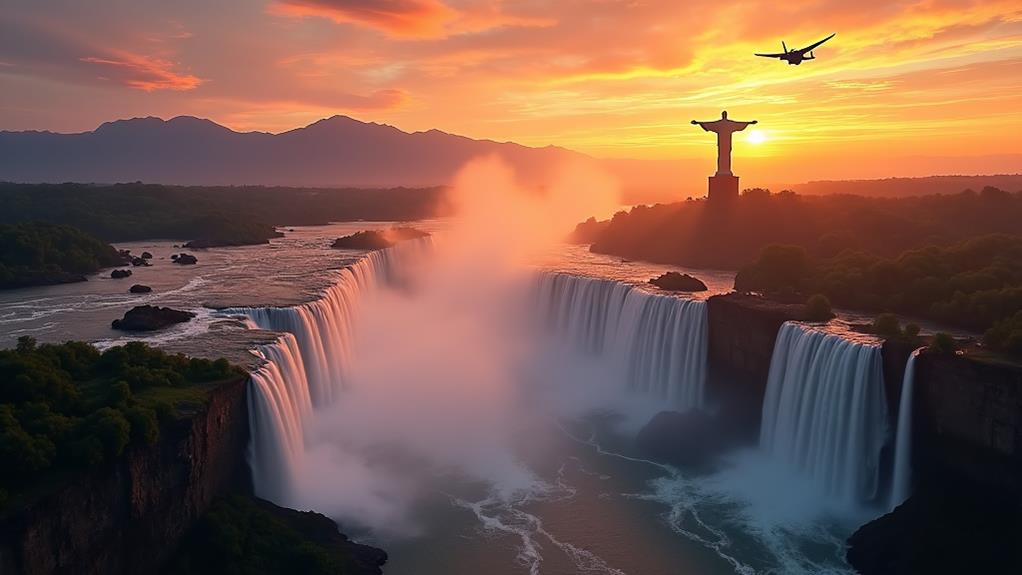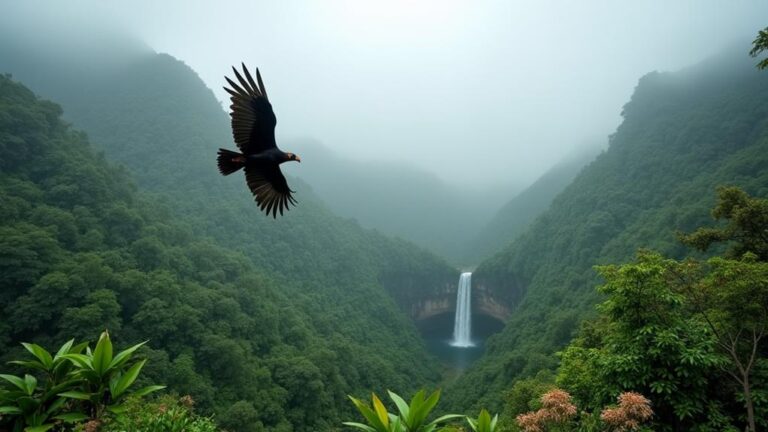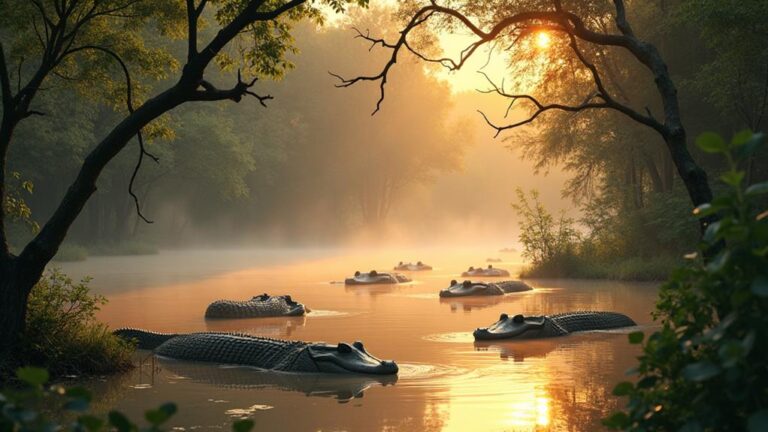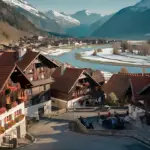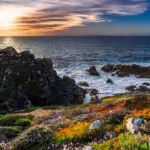You're planning a trip to Argentina and want to experience the country's most iconic landmarks. From the vibrant city of Buenos Aires to the breathtaking natural wonders of Patagonia, Argentina has a diverse range of attractions that showcase its rich history, stunning beauty, and vibrant culture. You'll want to visit the iconic Casa Rosada Presidential Palace and the historic Plaza De Mayo Landmark, but that's just the beginning. With so many famous landmarks to explore, the question is: where will you start your Argentine adventure?
Contents
- 1 Key Takeaways
- 2 Casa Rosada Presidential Palace
- 3 Plaza De Mayo Landmark
- 4 Iguazu National Park
- 5 Teatro Colon Opera House
- 6 Recoleta Cemetery
- 7 Mount Aconcagua Summit
- 8 Perito Moreno Glacier
- 9 Caminito Street Museum
- 10 Palermo Woods Park
- 11 Christ the Redeemer Monument
- 12 Frequently Asked Questions
- 13 Conclusion
Key Takeaways
- Argentina's government is centered around the historic Casa Rosada Presidential Palace in Buenos Aires.
- Iguazu National Park is a UNESCO World Heritage Site featuring over 270 stunning waterfalls and hiking trails.
- Teatro Colon Opera House in Buenos Aires is an iconic cultural landmark and world-renowned performance venue.
- Recoleta Cemetery in Buenos Aires is a grand and historic final resting place for many of Argentina's most influential citizens.
- Mount Aconcagua Summit is an iconic natural wonder and a popular destination for mountain climbing and breathtaking views.
Casa Rosada Presidential Palace
You're stepping into the heart of Argentina's capital city when you visit the Casa Rosada Presidential Palace in Buenos Aires.
This iconic landmark has been the seat of Argentina's government since 1862, boasting a rich presidential history that spans over a century and a half.
As you approach the palace, you'll be struck by its stunning Italianate architecture, with a mix of French and Italian influences.
The palace's striking facade features a beautiful pink-hued exterior, which is where it gets its name from – Casa Rosada translates to "Pink House" in English.
The building's design is the work of architect Francisco Tamburini, who incorporated various architectural styles to create a unique and breathtaking structure.
As you explore the palace, you'll have the opportunity to dig into Argentina's presidential history, learning about the country's leaders and the events that shaped its past.
The palace's architecture is a tribute to the country's rich cultural heritage, with its grand halls, ornate details, and beautifully manicured gardens.
Plaza De Mayo Landmark
After exploring the Casa Rosada Presidential Palace, it's natural to wander over to the Plaza de Mayo, a historic landmark that's just a stone's throw away in the heart of Buenos Aires. This vibrant public square is steeped in history and cultural significance, making it a must-visit destination for anyone traveling to Argentina.
| Feature | Description |
|---|---|
| Historic significance | Plaza de Mayo has been the site of many significant events in Argentine history, including the May Revolution of 1810 and the 1955 coup that overthrew President Juan Perón. |
| Cultural importance | The plaza is home to several important landmarks, including the Cabildo, a historic town hall that dates back to the 18th century, and the Metropolitan Cathedral, a stunning example of colonial architecture. |
| Public gatherings | Plaza de Mayo has long been a popular spot for public gatherings and protests, earning it a reputation as the heart of Argentine public life. |
| Architectural style | The plaza's architecture is a mix of colonial, neoclassical, and art nouveau styles, reflecting the many different influences that have shaped Buenos Aires over the years.
Iguazu National Park
As you explore Iguazu National Park, you'll find yourself surrounded by lush tropical forests teeming with exotic wildlife and towering above, the majestic Iguazu Falls.
You'll have the chance to hike along scenic trails that take you up close to the roaring waterfalls, feeling the mist on your skin.
With over 270 individual waterfalls and countless hiking trails, you'll be spoiled for choice in this natural wonderland.
Wildlife and Waterfalls
Iguazu National Park, a UNESCO World Heritage Site, beckons nature lovers and adventure seekers alike with its breathtaking spectacle of waterfalls and teeming wildlife.
As you explore the park, you'll have the opportunity to witness the incredible diversity of flora and fauna, and learn about the efforts being made to conserve this precious ecosystem.
Wildlife conservation is a top priority in the park, with programs in place to protect the many species that call Iguazu home, including jaguars, pumas, and toucans.
The park's waterfalls are a true marvel, with over 275 individual cascades spanning almost two miles.
You can explore the falls from a variety of different angles, from the Devil's Throat to the Upper Trail.
Some highlights of your visit might include:
- Taking a boat tour to get up close and personal with the falls
- Spotting some of the park's incredible wildlife, including monkeys, birds, and reptiles
- Learning about the park's unique geology and the history of the falls' formation
Whether you're interested in waterfall exploration or wildlife conservation, Iguazu National Park has something for everyone.
With its stunning natural beauty and commitment to conservation, it's a must-visit destination for anyone traveling to Argentina.
Hiking and Trails
You've experienced the raw power and majesty of Iguazu National Park's waterfalls, and now it's time to lace up your hiking boots and explore the park's extensive network of trails.
The park boasts an array of trails for hikers of all levels, from easy strolls to challenging mountain routes that'll put your hiking gear to the test.
One of the most popular trails is the Upper Trail, a 1.7-kilometer loop that takes you along the edge of the falls, offering breathtaking views of the water below.
For the more adventurous, the Lower Trail is a 1.6-kilometer loop that takes you down into the forest, where you can see the falls up close and personal.
If you're looking for a real challenge, the Macuco Trail is a 6.5-kilometer hike that takes you through the forest and offers stunning views of the surrounding mountains.
No matter which trail you choose, be sure to bring your hiking gear, including sturdy boots, plenty of water, and a map.
The park's mountain routes can be challenging, but the views are well worth it.
Teatro Colon Opera House
You're in for a treat when you visit the Teatro Colon Opera House, one of Argentina's most iconic landmarks.
As you step inside, you'll be surrounded by stunning architecture and design that will leave you in awe, from the grandiose chandeliers to the ornate moldings.
With a rich history of hosting notable performances, including legendary opera singers and world-renowned orchestras, this opera house has earned its place as one of the world's premier cultural venues.
Architecture and Design
Step into the grand world of Argentine architecture and design, where the majestic Teatro Colon Opera House stands as a crowning jewel.
Designed by Italian architect Francesco Tamburini and completed in 1908, this iconic landmark showcases a mix of architectural styles that will leave you in awe.
The Teatro Colon's design is a masterful blend of Baroque influences and Modernist styles.
The exterior's imposing façade is adorned with ornate details and imposing columns, while the interior's grand foyer and auditorium boast intricate moldings, gilded balconies, and a stunning chandelier.
Some of the notable architectural features of the Teatro Colon include:
- A massive auditorium with a seating capacity of over 2,500
- A grand foyer with a stunning chandelier and intricate moldings
- A unique horseshoe-shaped seating arrangement that provides an intimate setting for performances
As you explore the Teatro Colon, you'll be struck by the attention to detail and the sheer scale of the building.
From the imposing exterior to the opulent interior, every aspect of the Teatro Colon is a monument to the ingenuity and craftsmanship of its designers.
Notable Performances
The Teatro Colon's rich history is filled with notable performances that have left an indelible mark on the world of opera, ballet, and classical music.
As you step into this iconic theater, you'll be surrounded by the echoes of legendary artists who've graced its stages. From the likes of Enrico Caruso to Maria Callas, the Teatro Colon has played host to some of the most celebrated performances in theater history.
As you explore the theater's archives, you'll discover a plethora of dance festivals, concerts, and operas that have been performed over the years.
The theater's versatility has allowed it to host a wide range of performances, from classical ballets to modern dance recitals. You'll also learn about the theater's role in shaping the country's rich cultural heritage, and how it has influenced the development of opera and ballet in Argentina.
The Teatro Colon's notable performances are a legacy to its enduring heritage. As you take a tour of the theater, you'll have the opportunity to relive the magic of these performances and experience the grandeur of this iconic landmark for yourself.
Recoleta Cemetery
Located in the upscale Recoleta neighborhood of Buenos Aires, Recoleta Cemetery is a grand and historic final resting place for many of Argentina's most influential and affluent citizens.
As you walk through the cemetery's ornate gates, you'll be struck by the sheer scale and beauty of the mausoleums that line the streets.
With a history dating back to 1822, Recoleta Cemetery is a monument to the country's rich cultural heritage.
Recoleta Cemetery is home to some of the most famous tombs in Argentina, including those of Eva Perón, the former First Lady, and other notable figures.
The cemetery's grand entrance is guarded by two imposing stone angels, setting the tone for the elaborate mausoleums that lie within.
The cemetery is divided into sections, with the grandest tombs belonging to the country's most prominent families.
Recoleta Cemetery is also a popular tourist destination, attracting visitors from around the world with its stunning architecture and fascinating cemetery history.
As you explore the cemetery's winding streets, you'll gain a glimpse into the lives of Argentina's elite and the country's complex history.
Mount Aconcagua Summit
Imagine yourself at the base of the highest peak outside of Asia – Mount Aconcagua, an iconic landmark in Argentina that beckons you to challenge its mighty summit. As you stand before this towering giant, you can't help but feel a rush of excitement and a sense of adventure. With its snow-capped peak reaching 6,962 meters into the sky, Mount Aconcagua is a magnet for thrill-seekers and mountain enthusiasts.
For those who dare to take on the challenge, the mountain offers a range of routes for Mountain Climbing, from beginner-friendly trails to more advanced paths that require technical expertise. As you ascend higher, the air grows thinner and the winds grow stronger, but the breathtaking views make every step worthwhile.
Mount Aconcagua Climbing Routes and Camping Spots
| Route | Summit Camping Spot |
|---|---|
| Normal Route | Plaza Francia Camp |
| Polish Traverse Route | Plaza Argentina Camp |
| South Face Route | Casa de Piedra Camp |
| North Ridge Route | Plaza de Mulas Camp |
| Vacas Route | Confluencia Camp |
Whether you're an experienced climber or just starting out, Mount Aconcagua has something to offer. With its stunning landscapes and challenging trails, this mountain is the ultimate destination for adventure-seekers and nature lovers alike.
Perito Moreno Glacier
As you stand before the breathtaking Perito Moreno Glacier in Los Glaciares National Park, you'll witness the mesmerizing result of millions of years of glacial formation, a process that still shapes this icy landscape today.
You can get up close and personal with the glacier by taking a guided hike across its frozen surface or a boat tour that navigates the icy waters surrounding it.
But it's the glacier's dynamic nature – as evidenced by the massive icebergs that periodically break off into the lake below – that will leave you in awe.
Glacier Formation Process
Perito Moreno Glacier is one of only three Patagonian glaciers that continues to grow, and understanding its formation process provides valuable insights into this natural wonder.
As you explore this glacier, you'll discover that it's a complex process that involves the transformation of snow into ice.
The process begins with snowfall in the Andes Mountains, where the snow accumulates and is compressed into a thick layer of ice.
As you excavate deeper into the glacier's geology, you'll learn that it's influenced by various factors, including climate change.
Rising temperatures and changes in precipitation patterns can impact the glacier's growth and stability.
- Snow accumulation: The snowfall in the Andes Mountains is the primary source of ice for the glacier.
- Ice compaction: The weight of the snow compresses the ice, causing it to become denser and more compact.
- Glacial flow: The ice flows downhill under its own weight, creating a slow-moving river of ice that shapes the surrounding landscape.
Hiking and Boat Tours
Hiking and boat tours offer you an unparalleled experience at Perito Moreno Glacier, allowing you to witness the breathtaking beauty of this natural wonder up close. As you hike on the glacier's surface or take a boat tour, you'll be struck by the sheer scale and majesty of this frozen landscape. You can choose from a range of tour options, each offering a unique perspective on the glacier.
| Tour Type | Description |
|---|---|
| Mini-Trekking | A short, guided hike on the glacier's surface, suitable for beginners. |
| Big Ice Trekking | A longer, more challenging hike on the glacier, offering stunning views. |
| Scenic Cruises | A boat tour of the glacier's face, providing a unique perspective on the ice. |
| River Expeditions | A thrilling boat tour that takes you close to the glacier's foot, offering breathtaking views. |
| Kayaking Tours | A guided kayak tour that allows you to paddle through icy waters and get up close to the glacier. |
Whether you prefer to hike, take a scenic cruise, or set off on a river expedition, there's a tour option to suit your interests and abilities. With experienced guides and state-of-the-art equipment, you'll be able to explore the glacier in safety and style.
Iceberg Breaking Off
Witnessing an iceberg break off from the Perito Moreno Glacier is a moment of raw power and breathtaking drama.
As you stand before this natural wonder, you can't help but feel small against the forces of nature.
The Perito Moreno Glacier, one of only three Patagonian glaciers that are still growing, is a prime example of glacial dynamics in action.
As the glacier advances, it pushes against the lake's shoreline, causing massive chunks of ice to break off into the water.
This phenomenon is both beautiful and humbling, a reminder of the awe-inspiring power of nature.
Some interesting facts about the Perito Moreno Glacier include:
- The glacier is about 5 kilometers wide and 30 kilometers long, covering an area of approximately 250 square kilometers.
- Climate change is affecting the glacier's stability, causing it to calve more frequently.
- The Perito Moreno Glacier is considered one of the most accessible glaciers in Patagonia, making it a popular destination for tourists and scientists alike.
Caminito Street Museum
As you step into the vibrant Caminito Street Museum, you're immediately surrounded by a kaleidoscope of colorful houses, lively tango music, and an infectious energy that defines the essence of Argentine culture.
This outdoor museum in La Boca, Buenos Aires, is a must-visit destination, showcasing the city's rich history and artistic heritage.
The street art that adorns the walls of Caminito's houses is a mix of traditional and contemporary styles, with vibrant colors and bold designs that reflect the neighborhood's eclectic spirit.
The museum's history dates back to the 1950s, when local artist Benito Quinquela Martín began transforming the street into a work of art.
Over time, other artists joined in, and the street evolved into the dynamic museum it's today.
As you walk along Caminito, you'll discover a treasure trove of street art, including murals, sculptures, and mosaics.
The museum also features exhibits on the history of La Boca and the evolution of tango, providing a deeper understanding of Argentine culture and traditions.
With its unique blend of art, music, and history, Caminito Street Museum is an unforgettable experience that will leave you with lasting memories of Argentina.
Palermo Woods Park
You'll find a serene escape from the bustling streets of Buenos Aires in the Palermo Woods Park, a sprawling urban oasis that covers over 350 hectares of lush greenery.
As you wander through the park, you'll be surrounded by a tranquil atmosphere, perfect for unwinding and reconnecting with nature. The Palermo Woods Park is a must-visit destination for outdoor enthusiasts and nature lovers.
The park's extensive tree canopy provides shade and shelter from the elements, making it an ideal spot for picnics, jogging, or simply taking a leisurely stroll.
Some of the park's notable attractions and activities include:
- *Laguna de Palermo*: A picturesque lake that offers stunning views and a variety of waterfowl.
- *Japanese Garden*: A serene oasis within the park, featuring beautifully landscaped gardens and tranquil water features.
- *Bicycle trails*: Over 20 kilometers of bike paths that wind through the park, perfect for exploring the urban oasis.
Whether you're looking to escape the hustle and bustle of city life or simply enjoy the great outdoors, the Palermo Woods Park is a fantastic destination that offers something for everyone.
Christ the Redeemer Monument
Beyond the Argentine border, in neighboring Brazil, lies the iconic Christ the Redeemer Monument, a colossal Art Deco statue that's become synonymous with South American culture. You'll marvel at the sheer scale of this impressive landmark, and its striking design. Christ the Redeemer's construction took nearly a decade to complete, from 1922 to 1931.
| Year | Construction Milestones | Interesting Facts |
|---|---|---|
| 1922 | Construction began on the pedestal | Over 635 metric tons of reinforced concrete were used |
| 1925 | The statue's framework was built | The statue's arms stretch 92 feet wide |
| 1928 | The outer soapstone layer was added | 635 metric tons of soapstone were used to cover the statue |
| 1931 | Construction was completed | The monument was designed by French sculptor Paul Landowski |
The Christ the Redeemer Monument holds immense cultural significance as a symbol of Christianity and a representation of peace. Standing at an impressive 98 feet tall, the statue towers over Rio de Janeiro's scenery. You can't help but be in awe of the artistic masterpiece that this monument represents.
Frequently Asked Questions
What Vaccinations Are Required to Visit Argentina?
You'll need to check Argentina's travel restrictions, as vaccinations can change. Typically, you'll require a yellow fever vaccine if visiting certain areas. Make sure to get health certificates proving vaccination within the required timeframe.
Is Tap Water Safe to Drink in Argentina?
You'll be surprised to know 97% of Argentina's population has access to improved water sources. However, tap water safety varies, and its quality can be a concern. It's best to drink filtered or bottled water to safeguard your health.
Can I USe US Dollars in Argentina?
You'll need to exchange your US dollars for Argentine pesos, as they're the local currency. Many businesses accept dollars, but you'll get a better rate at currency exchange offices or using an ATM for pesos.
Are Credit Cards Widely Accepted in Argentina?
You swipe, tap, and insert, but do you know if credit cards are widely accepted in Argentina? While moving towards a cashless society, be cautious of credit card scams, as major cards like Visa and Mastercard are accepted.
Is Argentina a Safe Country for Solo Travelers?
When traveling solo to Argentina, you'll find mixed reviews on safety. Female travelers report mostly positive experiences, but you should still take solo travel tips seriously, like being aware of your surroundings, especially at night.
Conclusion
As you close the curtain on your Argentina adventure, the memories of these iconic landmarks will linger, a sweet serenade to the senses. The country's rich tapestry of history, culture, and natural beauty has surely left you enchanted. From the majestic Iguazu Falls to the grand Teatro Colon, each site has whispered secrets of Argentina's storied past, beckoning you to return and rekindle the romance with this alluring land.

